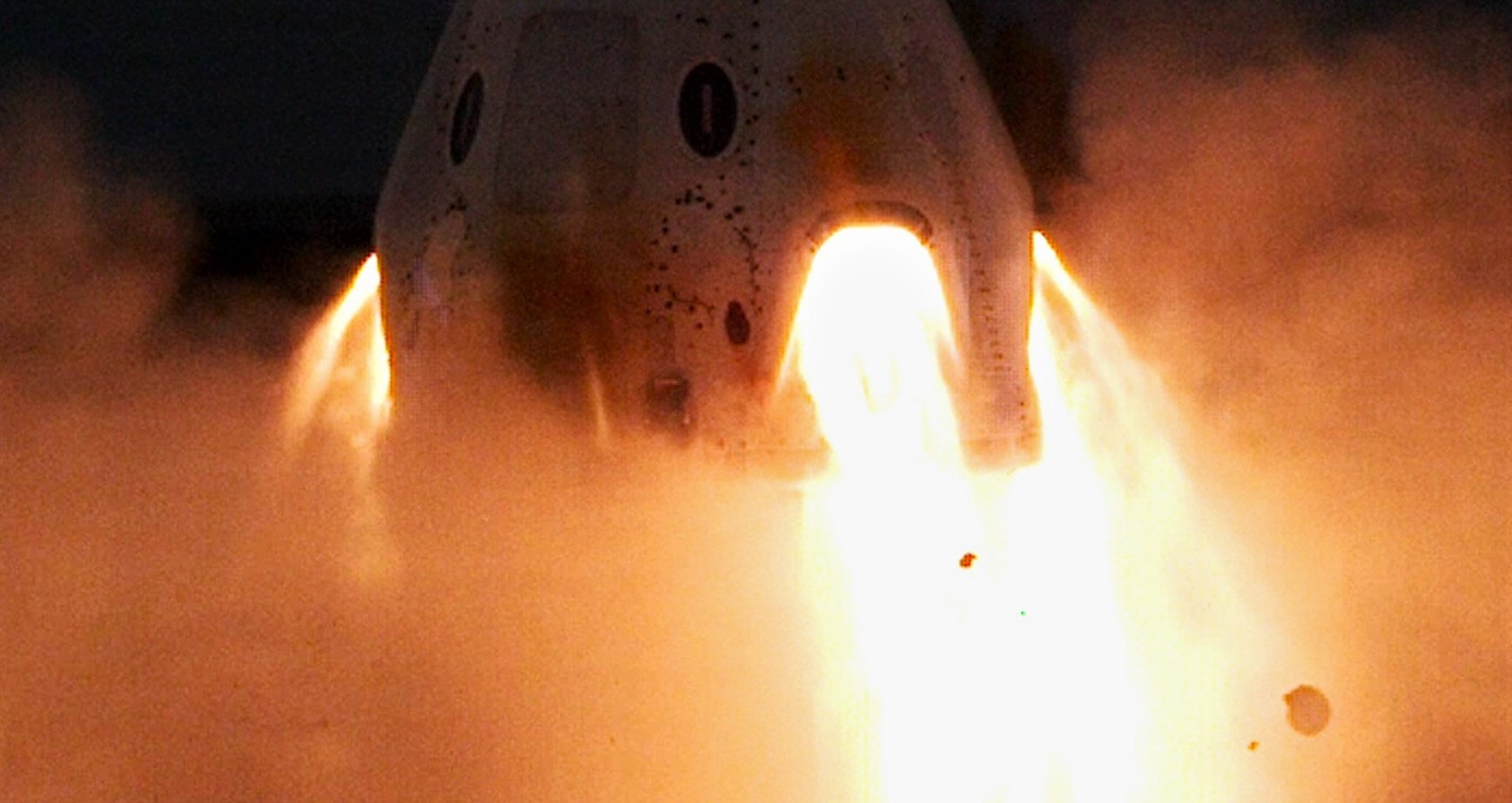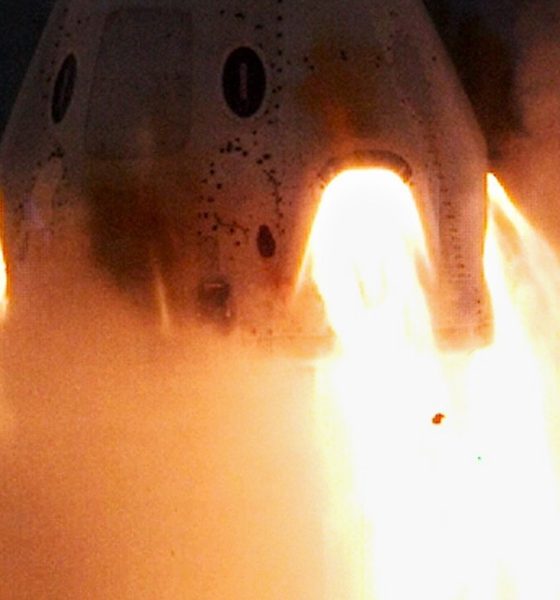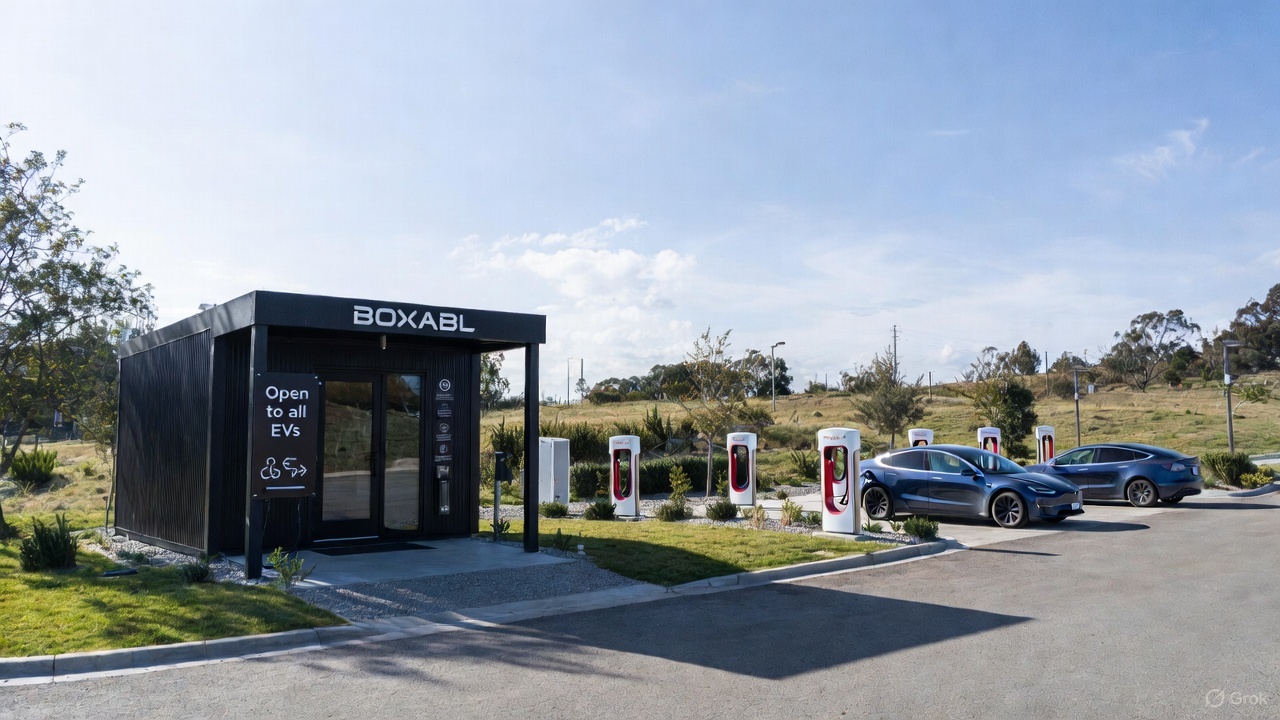

News
SpaceX says crew spacecraft abort test still on track for 2019 launch
NASA recently invited members of the media to apply for access to SpaceX’s Crew Dragon in-flight abort (IFA) test and, as of December 5th, the company reaffirmed that the crucial test is still on track to launch just weeks from now.
In September, SpaceX CEO Elon Musk revealed that Crew Dragon’s IFA spacecraft and Falcon 9 was scheduled to arrive in Florida within a few weeks. Days later, NASA confirmed that the rocket and spacecraft arrived in Florida on October 3rd, sooner, in fact, than Musk had predicted. Over the next few weeks, SpaceX technicians and engineers effectively closed out Crew Dragon capsule C205, priming it for operations and installing its body panels.
On November 13th, about six weeks after arriving in Florida, SpaceX successfully tested Crew Dragon’s redesigned propellant plumbing and high-pressure gas systems by static firing its Draco thrusters and SuperDraco abort engines. The successful static fire test lasted around 9 seconds, mirroring the SuperDraco impulse and thruster inputs the spacecraft would need to demonstrate in an actual in-flight abort. Crew Dragon has four sets of two SuperDraco engines capable of producing a combined thrust of more than 130,000 lbs (570 kN), almost as much thrust as the original SpaceX Merlin 1D engines used on Falcon 9 in the early 2010s.
Meant to verify that SpaceX has successfully redesigned Crew Dragon after the spacecraft suffered a catastrophic explosion during a very similar static fire attempt, November 13th’s was followed by an exhaustive hardware inspection and data review, some of which is likely still ongoing. Although NASA’s media invite suggests that a given launch event could be just a month or so away, there is a ton of uncertainty when dealing with major launches of new hardware (like Crew Dragon), meaning delays are all but guaranteed.
During a pre-launch media briefing ahead of SpaceX’s CRS-19 Cargo Dragon launch, director of Dragon mission management Jessica Jensen answered a question about Crew Dragon’s IFA test, cautiously stating that SpaceX teams are “targeting [a] December” launch. During SpaceX’s December 5th CRS-19 launch webcast, Dragon Engineering Manager John Federspiel briefly brought up Crew Dragon, noting that SpaceX was completing “minor refurbishment” following its successful static fire.
Most notably, he stated the IFA test was “targeted for February of 2020”, while Crew Dragon’s subsequent ‘Demo-2’ astronaut launch debut was expected to follow no earlier than (NET) “the first quarter of [2020]”, implying either February or March.
As it happened, SpaceX and several media outlets almost immediately attempted to correct the record, instead suggesting that Crew Dragon’s abort test is still tracking towards a launch later this month. Given that a senior Dragon engineering manager was the one to unblinkingly – and without correction – state that IFA is NET February 2020, there’s a strong possibility that he is technically correct but was not supposed to publicize the mission’s delay. At the same time, SpaceX appears to be firm on its claim that IFA is still aiming for a late-December launch. Delays would be no surprise – Crew Dragon’s Demo-1 launch debut took an agonizing three months to go from heading to the launchpad for the first to actually lifting off, almost entirely due to minor technical bugs and NASA paperwork.
Regardless, with less than four weeks left in 2019, SpaceX has an exceptionally tight schedule ahead of it to meet that December 2019 IFA launch goal and will effectively have to static fire IFA’s Falcon 9 before the end of the week or crush Crew Dragon’s inaugural processing time by at least a factor of four to achieve it. As such, a delay in 2020 should be all but expected at this point. With any luck, however, Crew Dragon will successfully perform its in-flight abort within the next 4-8 weeks, leaving SpaceX in a good place to prepare for its inaugural astronaut launch a few months later.
Check out Teslarati’s Marketplace! We offer Tesla accessories, including for the Tesla Cybertruck and Tesla Model 3.

News
Tesla discloses interesting collaboration partner for Supercharging
This BOXABL collaboration would be a great way to add a rest stop to a rural Supercharging location, and could lead to more of these chargers across the U.S.

Tesla disclosed an interesting collaboration partner in an SEC filing, which looks like an indication of a potential project at Supercharger sites.
Tesla said on Tuesday in the filing that it was entering an agreement with BOXABL to design and build a Micromenity structure. Simply put, this is a modular building, usually a few hundred square feet in size, and it has been seen at Superchargers in Europe.
In Magnant, France, Tesla opened a small building at a Supercharger that is available to all EV owners. There are snacks and drinks inside, including ice cream, coffee, a gaming console, and restrooms. It gives people an opportunity to get up and out of their cars while charging.
This building was not built by BOXABL, but instead by bk World Lounges. It is likely the final Supercharging stop before people get to Paris, as it is located 250 kilometers, or 155 miles, from the City of Light.
Voir cette publication sur Instagram
Magnant has 56 stalls, so it is a large Supercharging stop compared to most. The building could be a sign of things to come, especially as Tesla has opened up larger Supercharger stations along major roadways.
It is for just a single building, as the Scope of Work within the filing states “a comprehensive package for one Micromenity building.”
NEWS: BOXABL, a company that creates modular, prefabricated buildings, has entered into an agreement with @Tesla.
This is Tesla formally contracting BOXABL to design, engineer, and build a pilot “Micromenity” structure, a compact, modular building unit.
While some info in the… pic.twitter.com/RabJczGpEp
— Sawyer Merritt (@SawyerMerritt) December 9, 2025
Superchargers are commonly located at gas stations, shopping centers, and other major points of interest. However, there are some stops that are isolated from retail or entertainment.
This BOXABL collaboration would be a great way to add a rest stop to a rural Supercharging location, and could lead to more of these chargers across the U.S.
Tesla has done a lot of really great things for Supercharging this year.
Along with widespread expansion, the company launched the “Charging Passport” this week, opened the largest Supercharger in the world in Lost Hills, California, with 168 chargers, opened the Tesla Diner, a drive-in movie restaurant in Los Angeles, and initiated access to the infrastructure to even more automakers.
Elon Musk
Tesla CEO Elon Musk confirms Robotaxi safety monitor removal in Austin: here’s when
Musk has made the claim about removing Safety Monitors from Tesla Robotaxi vehicles in Austin three times this year, once in September, once in October, and once in November.

Tesla CEO Elon Musk confirmed on Tuesday at the xAI Hackathon that the company would be removing Safety Monitors from Robotaxis in Austin in just three weeks.
This would meet Musk’s timeline from earlier this year, as he has said on several occasions that Tesla Robotaxis would have no supervision in Austin by the end of 2025.
On Tuesday, Musk said:
“Unsupervised is pretty much solved at this point. So there will be Tesla Robotaxis operating in Austin with no one in them. Not even anyone in the passenger seat in about three weeks.”
Musk has made the claim about removing Safety Monitors from Tesla Robotaxi vehicles in Austin three times this year, once in September, once in October, and once in November.
In September, he said:
“Should be no safety driver by end of year.”
The safety driver is just there for the first few months to be extra safe.
Should be no safety driver by end of year.
— Elon Musk (@elonmusk) September 4, 2025
On the Q3 Earnings Call in October, he said:
“We are expecting ot have no safety drivers in at least large parts of Austin by the end of this year.”
Finally, in November, he reiterated the timeline in a public statement at the Shareholder Meeting:
“I expect Robotaxis to operate without safety drivers in large parts of Austin this year.”
Currently, Tesla uses Safety Monitors in Austin in the passenger’s seat on local roads. They will sit in the driver’s seat for highway routes. In the Bay Area ride-hailing operation, there is always a Safety Monitor in the driver’s seat.
Three weeks would deliver on the end-of-year promise, cutting it close, beating it by just two days. However, it would be a tremendous leap forward in the Robotaxi program, and would shut the mouths of many skeptics who state the current iteration is no different than having an Uber.
Tesla has also expanded its Robotaxi fleet this year, but the company has not given exact figures. Once it expands its fleet, even more progress will be made in Tesla’s self-driving efforts.
News
SpaceX reportedly mulling IPO, eyeing largest of all time: report
“I do want to try to figure out some way for Tesla shareholders to participate in SpaceX. I’ve been giving a lot of thought to how to give people access to SpaceX stock,” Musk said.

SpaceX is reportedly mulling an initial public offering, eyeing what would be the largest valuation at the time of availability of all time, a new report from Bloomberg said on Tuesday.
It is one of many reports involving one of Elon Musk’s companies and a massive market move, as this is not the first time we have seen reports of an IPO by SpaceX. Musk himself has also dispelled other reports in the past of a similar nature, including an xAI funding round.
SpaceX and Musk have yet to comment on the report. In the past, untrue reports were promptly replied to by the CEO; this has not yet gained any response, which is a good sign in terms of credibility.
However, he said just a few days ago that stories of this nature are inaccurate:
“There has been a lot of press claiming SpaceX is raising money at $800B, which is not accurate. SpaceX has been cash flow positive for many years and does periodic stock buybacks twice a year to provide liquidity for employees and investors. Valuation increments are a function of progress with Starship and Starlink and securing global direct-to-cell spectrum that greatly increases our addressable market. And one other thing that is arguably most significant by far.”
There has been a lot of press claiming @SpaceX is raising money at $800B, which is not accurate.
SpaceX has been cash flow positive for many years and does periodic stock buybacks twice a year to provide liquidity for employees and investors.
Valuation increments are a…
— Elon Musk (@elonmusk) December 6, 2025
Musk has discussed a potential IPO for SpaceX in recent months, as the November 6 shareholder meeting, as he commented on the “downsides” of having a public company, like litigation exposure, quarterly reporting pressures, and other inconveniences.
Nevertheless, Musk has also said he wants there to be a way for Tesla shareholders to get in on the action. At the meeting in early November, he said:
“I do want to try to figure out some way for Tesla shareholders to participate in SpaceX. I’ve been giving a lot of thought to how to give people access to SpaceX stock.”
Additionally, he added:
“Maybe at some point., SpaceX should become a public company despite all the downsides of being public.”
Musk has been historically reluctant to take SpaceX public, at times stating it could become a barrier to colonizing Mars. That does not mean it will not happen.
Bloomberg’s report cites multiple unidentified sources who are familiar with the matter. They indicate to the publication that SpaceX wants to go public in mid-to-late 2026, and it wants to raise $30 billion at a valuation of around $1.5 trillion.
This is not the first time SpaceX has discussed an IPO; we reported on it nine years ago. We hope it is true, as the community has spoken for a long time about having access to SpaceX stock. Legendary investor Ron Baron is one of the lucky few to be a SpaceX investor, and said it, along with Tesla, is a “lifetime investment.”
Tesla bull Ron Baron reveals $100M SpaceX investment, sees 3-5x return on TSLA
The primary driver of SpaceX’s value is Starlink, the company’s satellite internet service. Starlink contributes 60-70 percent of SpaceX’s revenue, meaning it is the primary value engine. Launch services, like Falcon 9 contracts, and the development of Starship, also play supporting roles.








